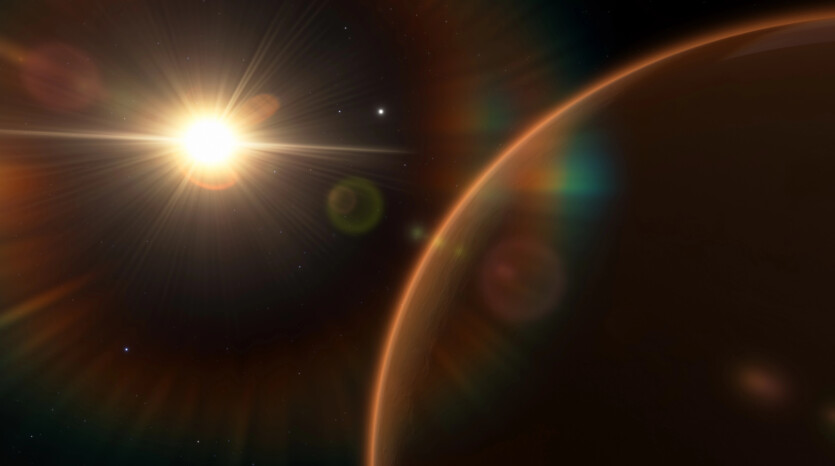
Astronomers have discovered as many as four tiny exoplanets, orbiting the neighboring Barnard star, almost 6 light years from Earth.
According to the results of the research, scientists have found that the size of each of these planets is no more than 20-30% of the size of the Earth. The rocky exoplanets are close enough to us that in the future, with the help of advanced technologies, people could get there. However, we should not expect to find signs of any life on these exoplanets.
For a long time, astronomers have been trying to identify the mysterious planet orbiting Barnard’s Star. Scientists were inclined to believe that a Jupiter-like planet orbits the red dwarf with a mass 6 times less than the Sun’s gas giant. Such assumptions were made because Barnard’s star itself was from time to time closer and then farther away from the Earth, indicating the gravitational pull of some mysterious object.
In the new study, astronomers have found that this attraction is caused not by a single gas giant, but by the combined traction of four tiny rocky exoplanets each of which is about 4 times more massive than Mercury. The new planets have not yet been named. They are so close to their parent star that they make a complete revolution around it in just a few days. Astronomers assume that because of this, they are likely to be so hot that they are not habitable.
In addition, astronomers believe that the discovery of these planets probably eliminates the chances that any other exoplanets are orbiting within the potentially habitable zone around Barnard’s star. Although humanity does not currently have the technology to travel to this star system, in the future researchers will be able to get there using more advanced nuclear fusion rocket engines or solar sail technology.
Most exoplanets are discovered by astronomers when they pass in front of their parent star and block some of the light coming from it toward Earth. However, in the case of Barnard’s star, scientists believe they observed it from above. Because of this, scientists have called this red dwarf «great white whale».
In order to conduct a thorough observation of Barnard’s star, the scientists used the MAROON-X high-precision radial velocity spectrograph as part of the Gemini North telescope at the Hawaii. It took the telescope 112 nights in a row over three years to record the subtle vibrations of Barnard’s star and determine the number of planets orbiting the red dwarf and their masses. Initially, 3 planets were detected. However, a study published in October 2024, using another ESPRESSO spectrograph at ESO’s VLT telescope in Chile, helped to identify another exoplanet.
Red dwarfs are the most common type of star in the universe, but most are too far from Earth for researchers to easily notice the planets around them. However, the new results hint that there may be a large number of small rocky planets around these miniature stars. But for the research team, the most exciting thing about the new study was the discovery of worlds that are so close to Earth.
A giant space neighbor: James Webb telescope detects unique exoplanet near Earth
The study was published in the journal The Astrophysical Journal Letters
Source: LiveScience

Spelling error report
The following text will be sent to our editors: